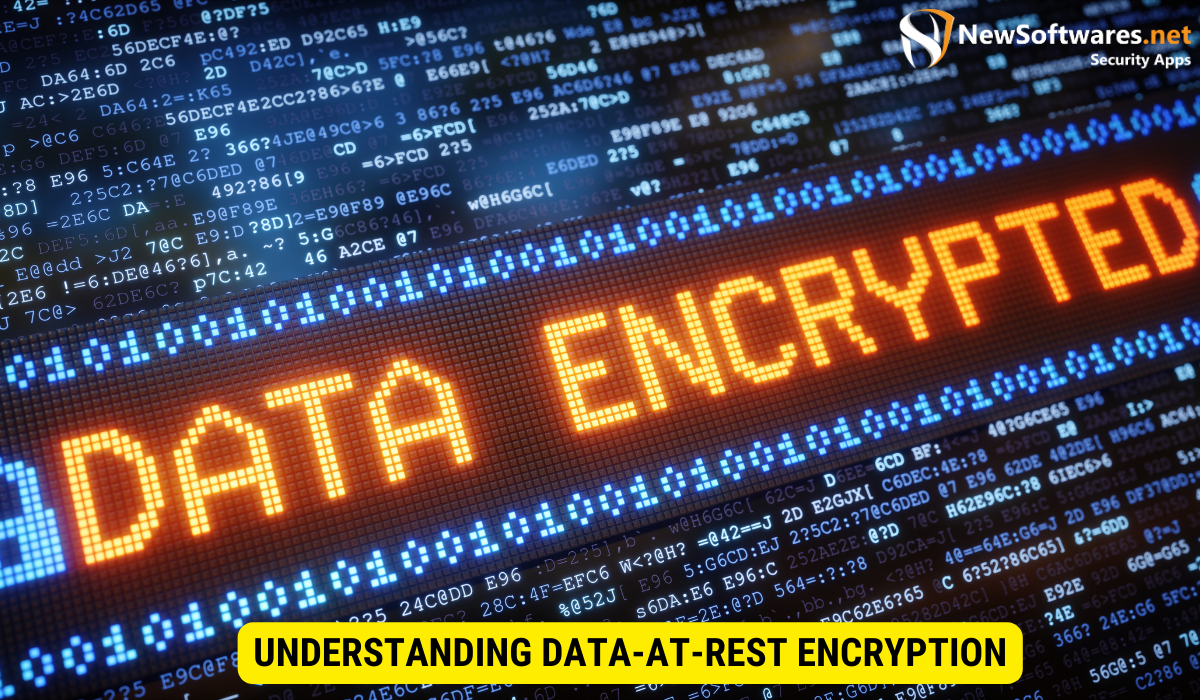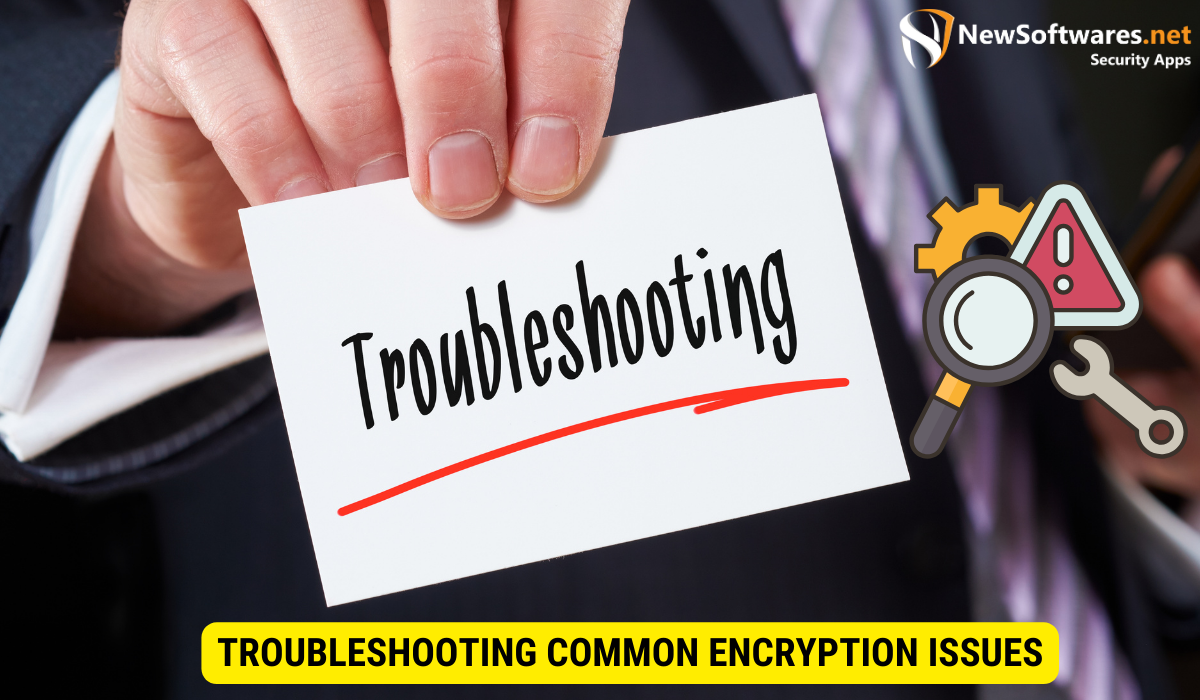To encrypt data at rest on Windows Server 2012, you can use BitLocker Drive Encryption, a built-in feature. Data-at-rest encryption secures data stored on your server by transforming it into an unreadable format. It’s vital for data security, compliance, and safeguarding against unauthorized access. BitLocker ensures the entire server drive is encrypted, and it includes features like recovery keys and encryption settings. Proper key management, regular maintenance, and addressing common encryption issues are crucial. Data-at-rest encryption remains essential even with a secure network, and it can be rotated periodically for improved security.
In a digital age, data security is of utmost importance. With cyber threats becoming increasingly sophisticated, organizations need robust measures to protect their sensitive information. One such measure is data-at-rest encryption, which plays a vital role in ensuring the safety of information stored on Windows Server. Together, we will delve into the world of data-at-rest encryption, explore its significance, and understand how Windows Server can help safeguard your valuable data.
Understanding Data-at-Rest Encryption

Data-at-rest encryption refers to the process of encrypting data when it is being stored or saved. It ensures that if an unofficial person gains access to the storage media, they would not be able to decipher the data without the proper decryption key. This serves as a second additional layer of protection, preventing data breaches and unauthorized access.
Defining Data-at-Rest Encryption
Data-at-rest encryption involves the transformation of data into an unreadable format using cryptographic algorithms. The encrypted data can only be unlocked and accessed by official individuals with the proper decryption key. This encryption can be applied to various forms of data, including files, databases, and virtual machine disks, ensuring their confidentiality and security while at rest.
Importance of Data-at-Rest Encryption
The importance of data-at-rest encryption cannot be overstated in today’s data-driven world. Here are a few key reasons why organization should consider implementing data-at-rest encryption:
- Protecting Confidential Information: Encryption guarantees that even if data falls into the incorrect hands, it remains unreadable and unusable, protecting sensitive information such as customer data, financial records, and intellectual property.
- Compliance with Regulations: Many industries have strict rules regarding data protection. By implementing data-at-rest encryption, organizations can demonstrate agreement with these regulations and avoid potential penalties and legal consequences.
- Mitigating Insider Threats: Data breaches can occur internally as well. Encryption prevents unauthorized employees or insiders from accessing and misusing sensitive data.
- Enhancing Reputation and Trust: Data breaches can significantly damage an organization’s reputation and erode customer trust. Encryption helps protect against breaches, safeguarding the reputation and trust of the organization.
- Securing Data on End-of-Life Devices: Data-at-rest encryption is particularly crucial when retiring or disposing of old storage devices. It ensures that even if the device is compromised, the stored data remains protected.
Data-at-rest encryption is a complex process that involves various cryptographic algorithms and key management systems. These algorithms, such as Advanced Encryption Standard (AES) and Triple Data Encryption Standard (3DES), use mathematical functions to transform the data into an unreadable format. The encryption key, which is a unique string of characters, is required to decrypt the data and make it readable again.
Organizations must carefully consider the implementation of data-at-rest encryption, taking into account factors such as performance impact, scalability, and compatibility with existing systems. Encryption can introduce additional overhead and may require dedicated hardware or software solutions to ensure efficient and secure data storage.
In addition to encryption, organizations should also implement other security measures to guard data at rest. This includes access controls, strong authentication mechanisms, and regular security audits to recognize and address any vulnerabilities in the storage infrastructure.
Furthermore, data-at-rest encryption should be part of a comprehensive data protection strategy that includes encryption in transit (protecting data while it is being transmitted between systems) and encryption in use (protecting data while it is being processed or accessed by authorized users).
Overall, data-at-rest encryption is a critical component of data safety, providing an additional layer of protection against unauthorized access and data breaches. By implementing robust encryption solutions and adopting best practices, organizations can defend their sensitive data and maintain the expectation of their customers and stakeholders.
Windows Server and Data Security
Windows Server has been designed with security in mind, offering numerous features that help organizations protect their data. Let’s explore the role of Windows Server in data security and some key features it provides:
Role of Windows Server in Data Security
Windows Server plays a vital role in ensuring data security by offering a range of built-in security features. These features provide a solid foundation for protecting data stored on Windows Server, including data-at-rest encryption.
Key Features of Windows Server for Data Protection
Windows Server provides several key features to enhance data security:
- BitLocker Drive Encryption: BitLocker helps protect data by encrypting the entire Windows Server drive. It ensures that even if the drive is removed from the server or stolen, the data remains secure.
- Active Directory Rights Management Services (AD RMS): AD RMS allow organizations to apply persistent protection to their sensitive data, including encryption and access control, both on-premises and in the cloud.
- Windows Server AppLocker: With AppLocker, organizations can restrict the execution of unauthorized applications, preventing potential malware attacks and unauthorized access to data.
- Windows Defender Antivirus: Windows Server comes equipped with Windows Defender Antivirus, offering real-time protection against various types of malware and viruses.
- Windows Server Security Baseline: Microsoft provides security baselines for Windows Server, which help organizations configure their servers securely and meet industry best practices.
Implementing Data-at-Rest Encryption on Windows Server
Implementing data-at-rest encryption on Windows Server requires proper planning and execution. Let’s look at the steps involved:
Preparing Your Windows Server for Encryption
Before implementing data-at-rest encryption, ensure that your Windows Server meets the necessary prerequisites. This includes enabling and configuring BitLocker, checking hardware compatibility, and establishing a secure key management infrastructure.
Step-by-Step Guide to Implement Encryption
Once your Windows Server is ready, follow these steps to implement data-at-rest encryption using BitLocker:
- Choose the Drives to Encrypt: Select the drives that contain sensitive data and need to be encrypted.
- Enable BitLocker: Turn on BitLocker for the chosen drives and specify the encryption options, such as the encryption algorithm and authentication method.
- Generate and Store the Recovery Key: Create a recovery key that will be required to unlock the encrypted drive in case the decryption key is lost or inaccessible. Store this key securely.
- Monitor the Encryption Process: Allow BitLocker to encrypt the drives, monitoring the progress to ensure successful encryption.
- Test and Verify Encryption: Once the encryption process is complete, test and verify that the encrypted drives can be accessed and decrypted as expected.
Managing Encrypted Data on Windows Server
After implementing data-at-rest encryption, it is essential to understand how to manage and interact with encrypted data effectively. Here are some key aspects to consider:
Accessing and Retrieving Encrypted Data
To access and retrieve encrypted data, ensure that the authorized individuals have the necessary decryption keys. This may involve entering passwords or using smart cards or other authentication methods.
Regular Maintenance and Updates for Encrypted Data
Regularly update and maintain the encrypted drives to ensure the security and performance of the encrypted data. This includes applying Windows Server updates, checking for encryption key expiration, and monitoring for any security vulnerabilities.
Troubleshooting Common Encryption Issues

While data-at-rest encryption provides robust security, issues can occasionally arise. Let’s explore some common encryption problems and their solutions:
Identifying Common Encryption Problems
Common encryption issues may include key management difficulties, recovery key loss, hardware compatibility problems, or performance degradation.
Solutions for Encryption Issues
To address encryption issues, consider the following solutions:
- Proper Key Management: Implement a robust key management strategy, including securely storing and backing up encryption keys.
- Recovering Lost Keys: Establish a process for recovering lost encryption keys, such as using a recovery key or leveraging Active Directory for key archival.
- Checking Hardware Compatibility: Ensure that the hardware meets the necessary requirements for BitLocker and other encryption mechanisms.
- Optimizing Performance: Fine-tune the encryption settings and hardware configurations to minimize any impact on system performance.
Key Takeaways
Here are some key takeaways to remember:
- Data-at-rest encryption protects data stored on Windows Server from unauthorized access.
- Windows Server offers various built-in security features, such as BitLocker and AD RMS, to enhance data security.
- Implementing data-at-rest encryption requires proper preparation, including enabling and configuring BitLocker and establishing a key management infrastructure.
- Managing encrypted data involves ensuring authorized access and regularly maintaining and updating the encrypted drives.
- Common encryption issues can be addressed through proper key management, recovery mechanisms, checking hardware compatibility, and performance optimization.
FAQs
Is data-at-rest encryption necessary if my network is already secure?
Yes, data-at-rest encryption is still necessary even if your network is secure. Network security does not guarantee the protection of data stored on servers. Data-at-rest encryption provides an additional layer of security, safeguarding the data even if the network security measures are compromised.
Can data-at-rest encryption impact system performance?
Data-at-rest encryption can have a minimal impact on system performance, especially if the hardware meets the necessary requirements. However, it is essential to fine-tune the encryption settings and regularly monitor performance to ensure any impact is minimized.
How often should encryption keys be rotated?
Encryption keys should be rotated periodically to enhance security. The frequency of key rotation depends on organizational policies and industry regulations. It is best practice to rotate encryption keys at least annually or whenever there is a suspected compromise.
Can data-at-rest encryption protect against insider threats?
Yes, data-at-rest encryption can protect against insider threats by preventing unauthorized individuals, including employees, from accessing and misusing sensitive data. Encryption ensures that even if an unauthorized insider gains access to the storage media, the encrypted data remains unreadable.
Are there any alternatives to BitLocker for data-at-rest encryption on Windows Server?
Yes, there are alternative solutions to BitLocker for data-at-rest encryption on Windows Server, such as third-party encryption software. These solutions offer similar functionality and may provide additional features depending on the specific requirements of the organization.
Conclusion
Data security is a critical aspect of any organization’s operations, and data-at-rest encryption plays a vital role in ensuring the confidentiality and integrity of stored data. Windows Server offers robust features that enable organizations to implement data-at-rest encryption effectively. By understanding the significance of data-at-rest encryption, leveraging the capabilities of Windows Server, and following best practices, organizations can enhance their data security posture and protect their valuable information.
